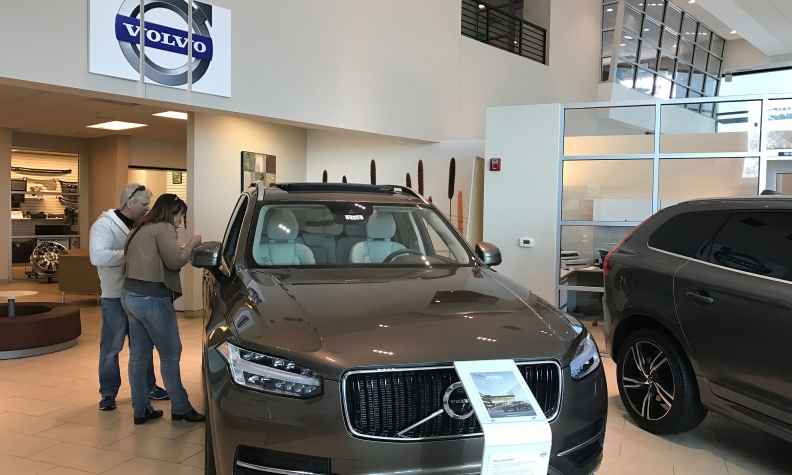U.S. new-vehicle sales are on pace for the strongest March since 2000, with fast-rising incentives expected to help the industry post its first year-over-year increase of 2017.

Sales are projected to rise 3 percent, according to a forecast from Kelley Blue Book. Edmunds projects a 2.1 percent increase, and LMC Automotive estimates a 1.6 percent gain, while ALG is calling for only a 0.2 percent increase. The forecasts translate to an annualized sales rate of 16.9 million to 17.4 million, up from 16.66 million a year ago.
Analysts say they are seeing signs that the market is beginning to erode, even as automakers dangle more generous cash-back and lease deals to keep showrooms busy.
“Despite considerably higher discounts and incentives, first quarter sales totals will likely only finish flat versus last year, a signal of weakening consumer demand for new vehicles,” Tim Fleming, a KBB analyst, said in a statement. “As sales cool after years of robust growth, adjusting production accordingly and managing supply, especially in car segments, should be top priorities for automakers.”
Automakers are scheduled to report March sales on Monday.
March is the ninth consecutive month in which new-vehicle incentives average at least 10 percent of the sticker price, according to J.D. Power, which provides the data for LMC’s forecast. ALG data show that incentive spending climbed 13 percent from a year ago, to $3,511, with the biggest jumps, percentagewise, occurring at Subaru, American Honda, General Motors and Nissan North America. BMW is the only one of the 12 largest automakers whose incentives declined from March 2016.
“If you only look at the sales numbers, it could be tempting to say that the industry is just as strong as it was a year ago,” Jessica Caldwell, Edmunds’ executive director of industry analysis, said in a statement Wednesday. “But there are several areas of concern this year lurking just below the surface. Inventories have reached levels not seen in more than a decade, and incentives are rising. We’re also seeing an increase in loan duration and indications of an increase in subprime lending, both of which demonstrate sales aren’t coming as easily as they used to.”
A report from Wells Fargo last week said retail demand appears to be “losing steam.”
But LMC said it is maintaining its full-year forecast for 2017 of 17.6 million sales, which would be 0.3 percent more than the record 17.54 million sold last year. It said there is considerable uncertainty about policies Congress or the Trump administration will enact, such as a controversial tax on imported parts and vehicles that could raise prices and reduce demand by as much as 2 million vehicles.
GM is expected to gain nearly 1 point of market share, according to the KBB and ALG forecasts. Subaru, Honda, Nissan and Volkswagen Group of America also are projected to post above-average sales increases.
Ford Motor Co. is forecast to post the biggest market share decline, though KBB said that would be the result of reduced fleet deliveries overshadowing a smaller increase in retail volume. Toyota Motor Sales U.S.A., Fiat Chrysler Automobiles and Hyundai-Kia are expected to lose share as well.
KBB said SUVs and crossovers continue to pull customers away from traditional sedans, with midsize car sales falling 17 percent and midsize utilities rising 17 percent in March.
